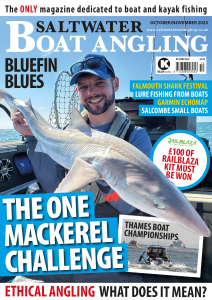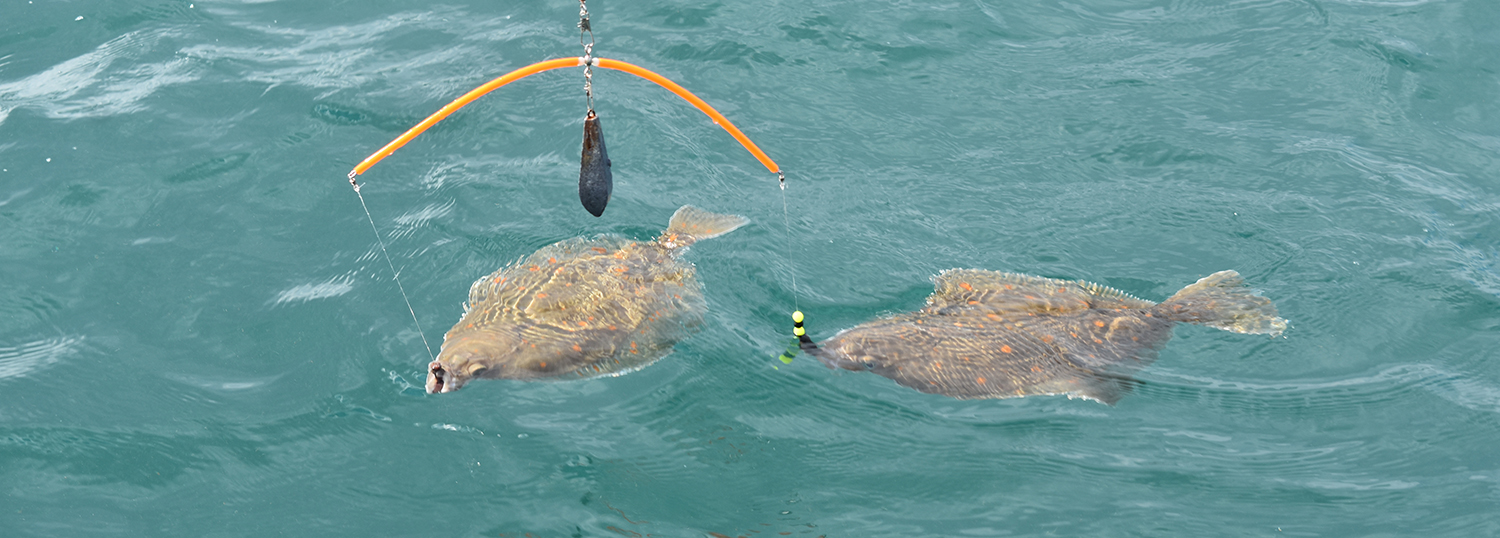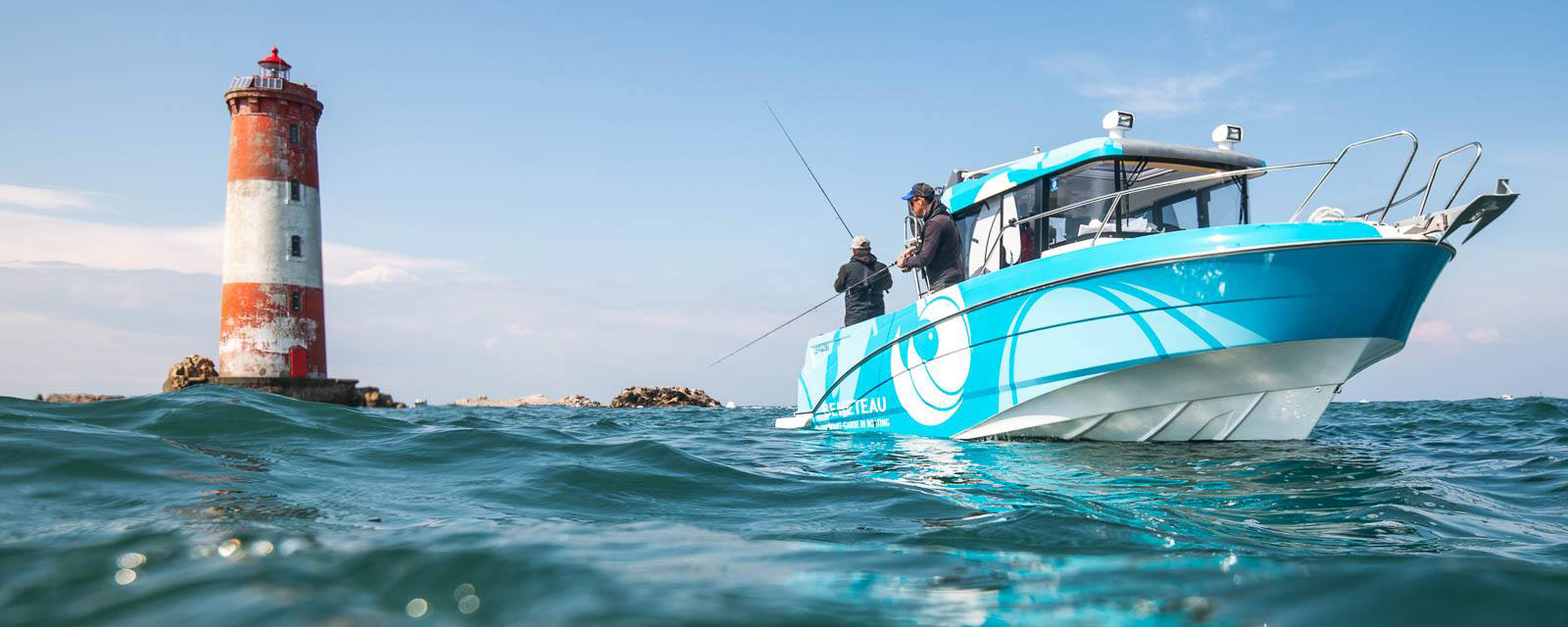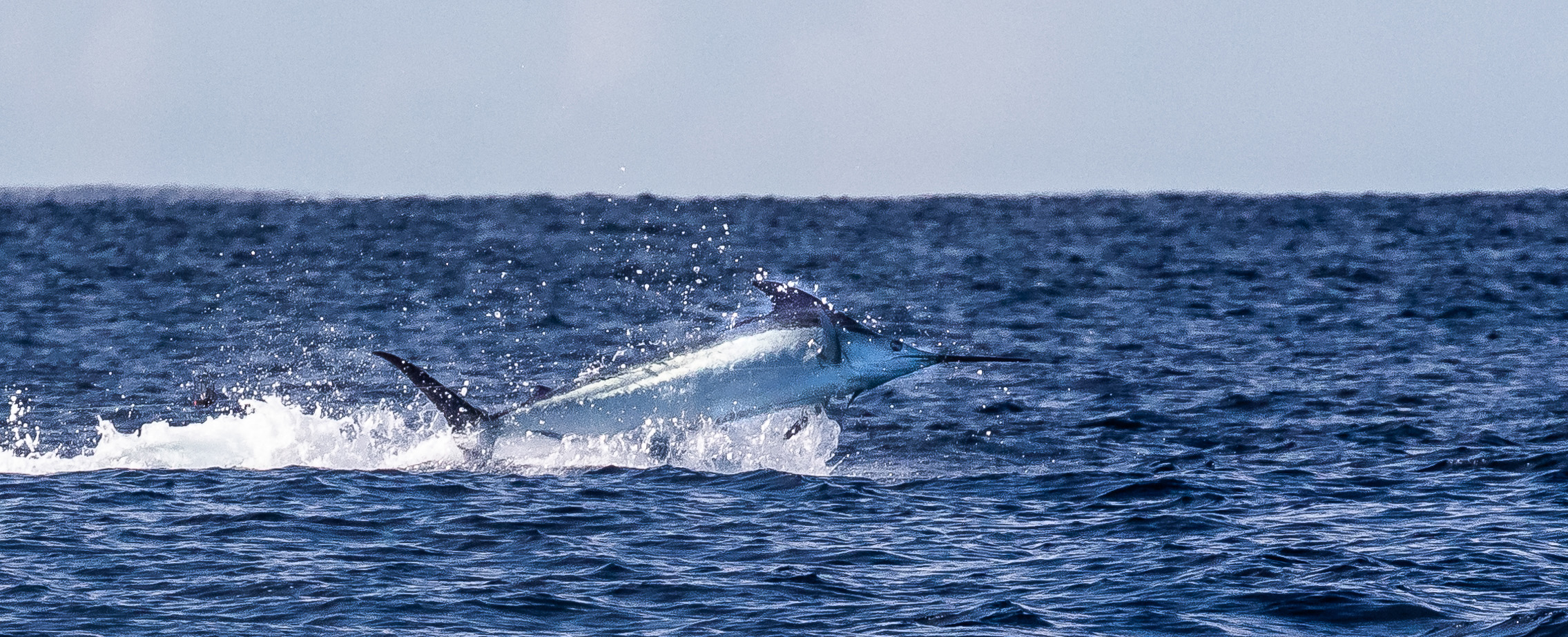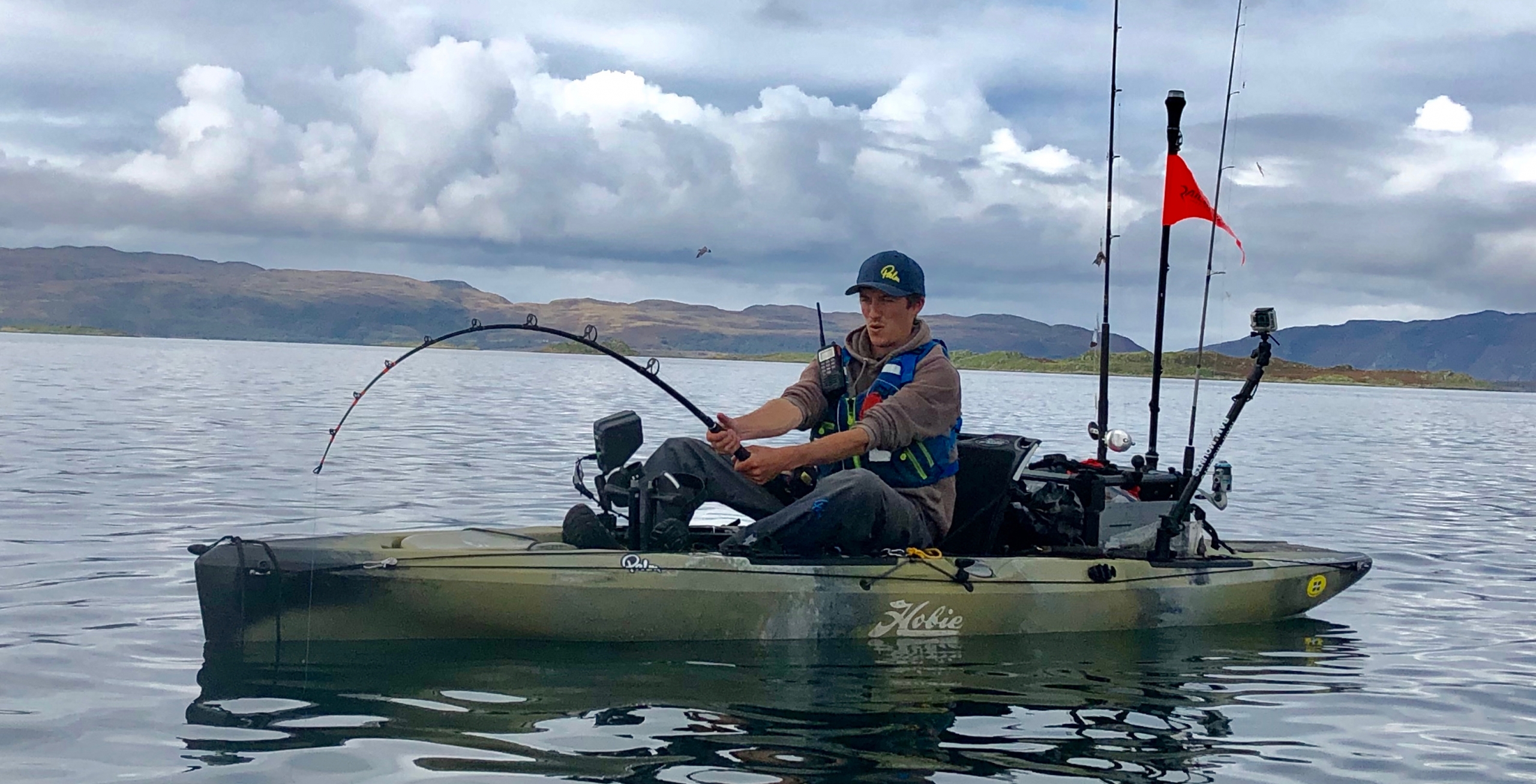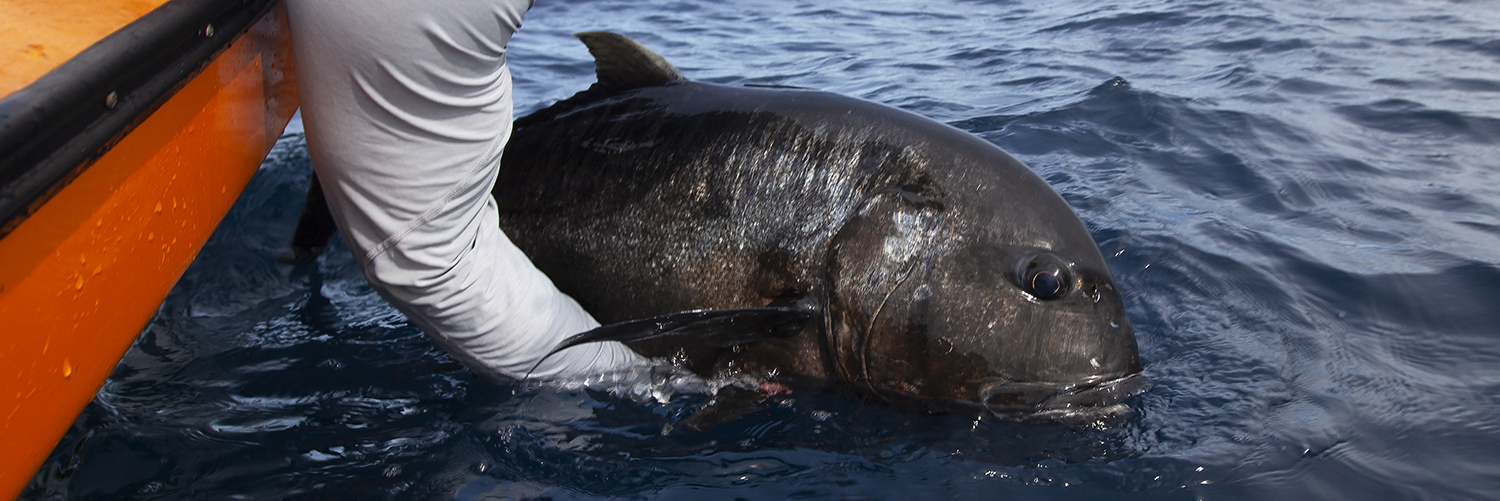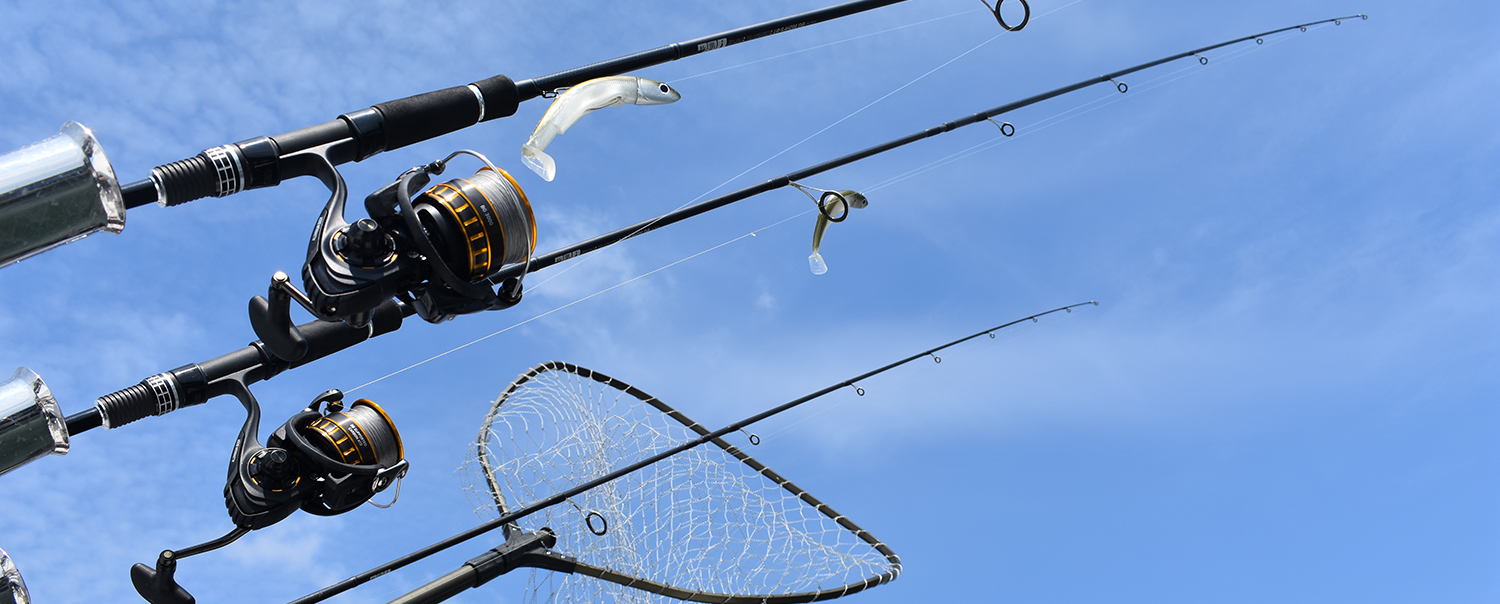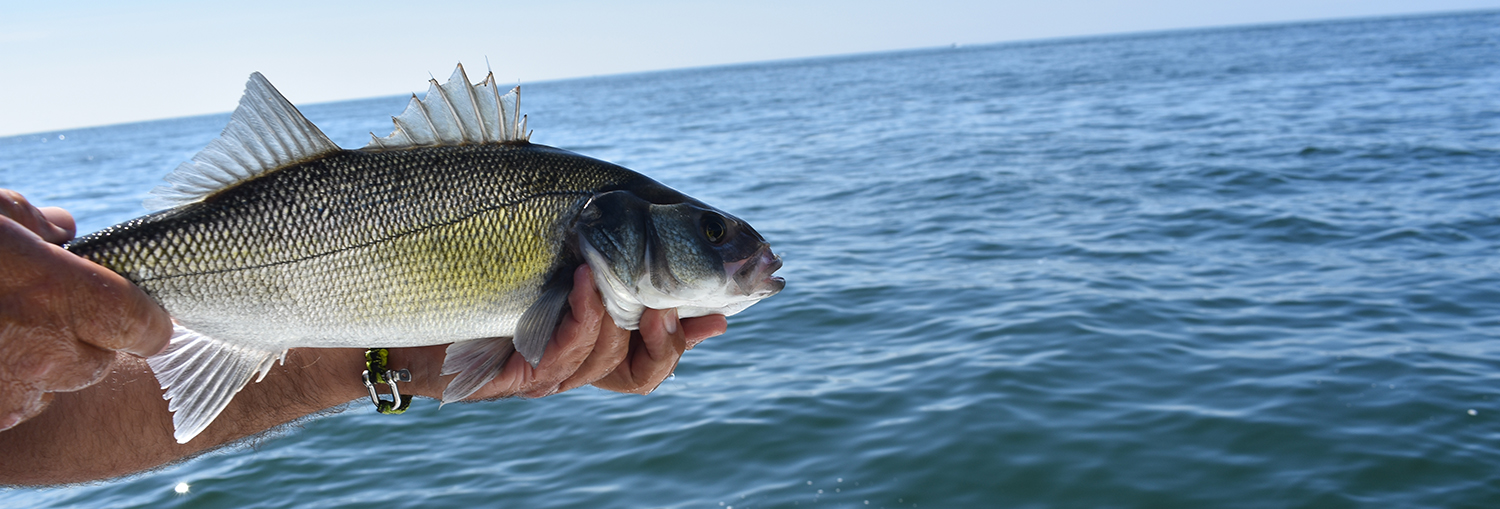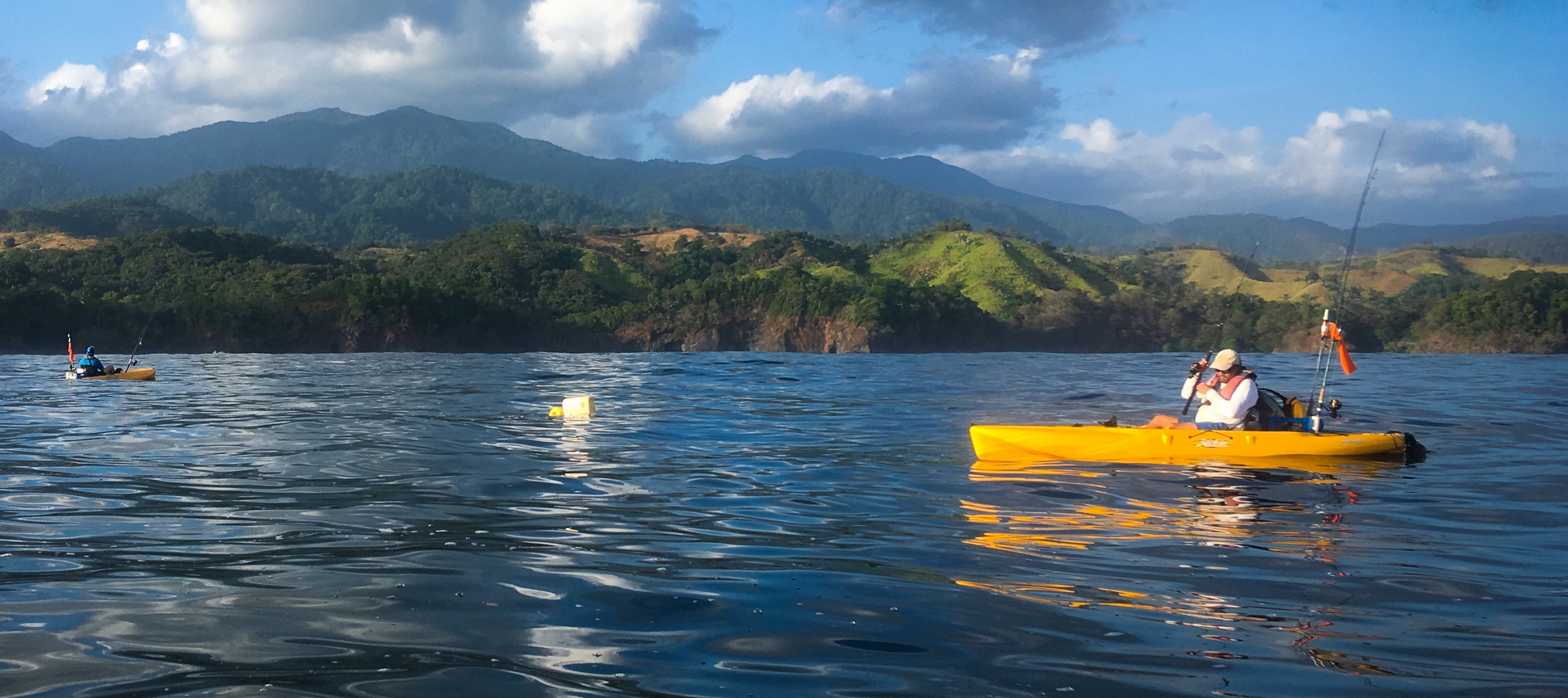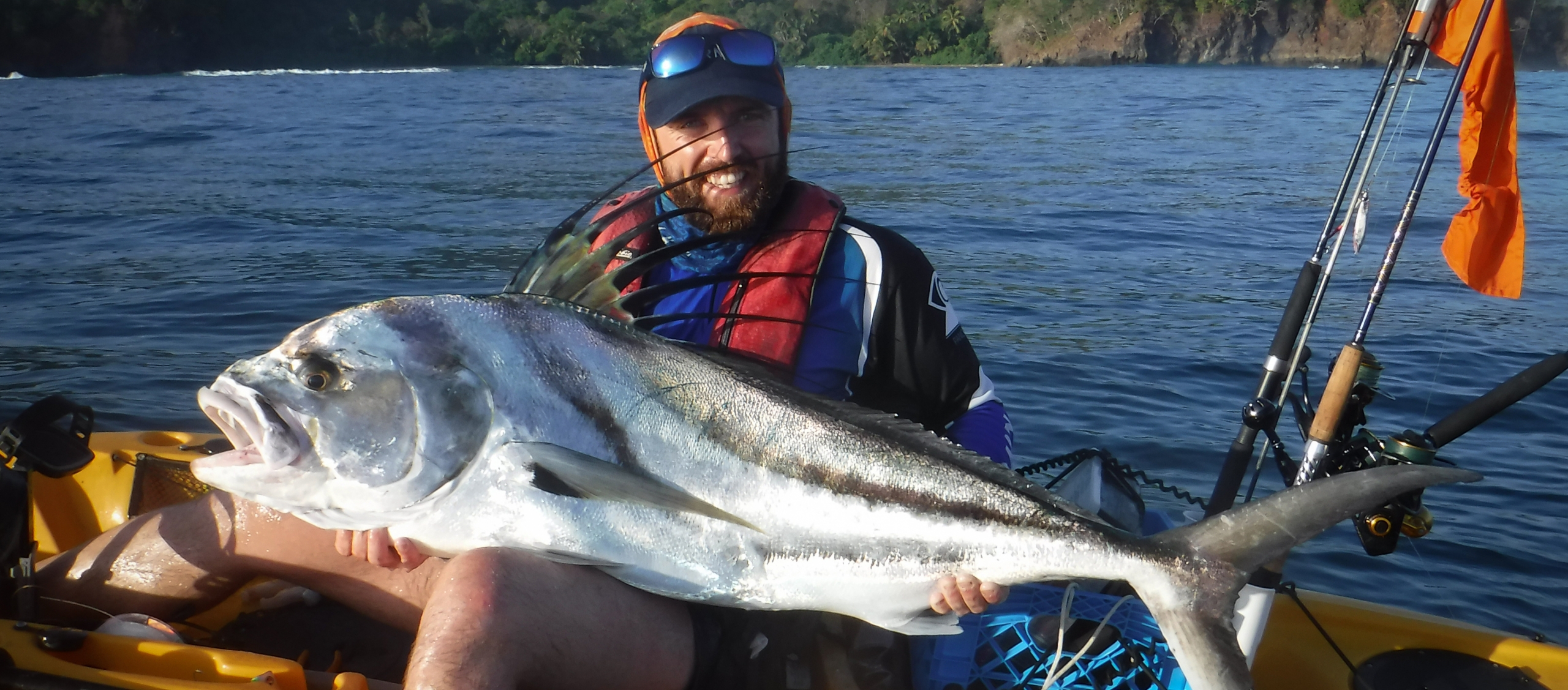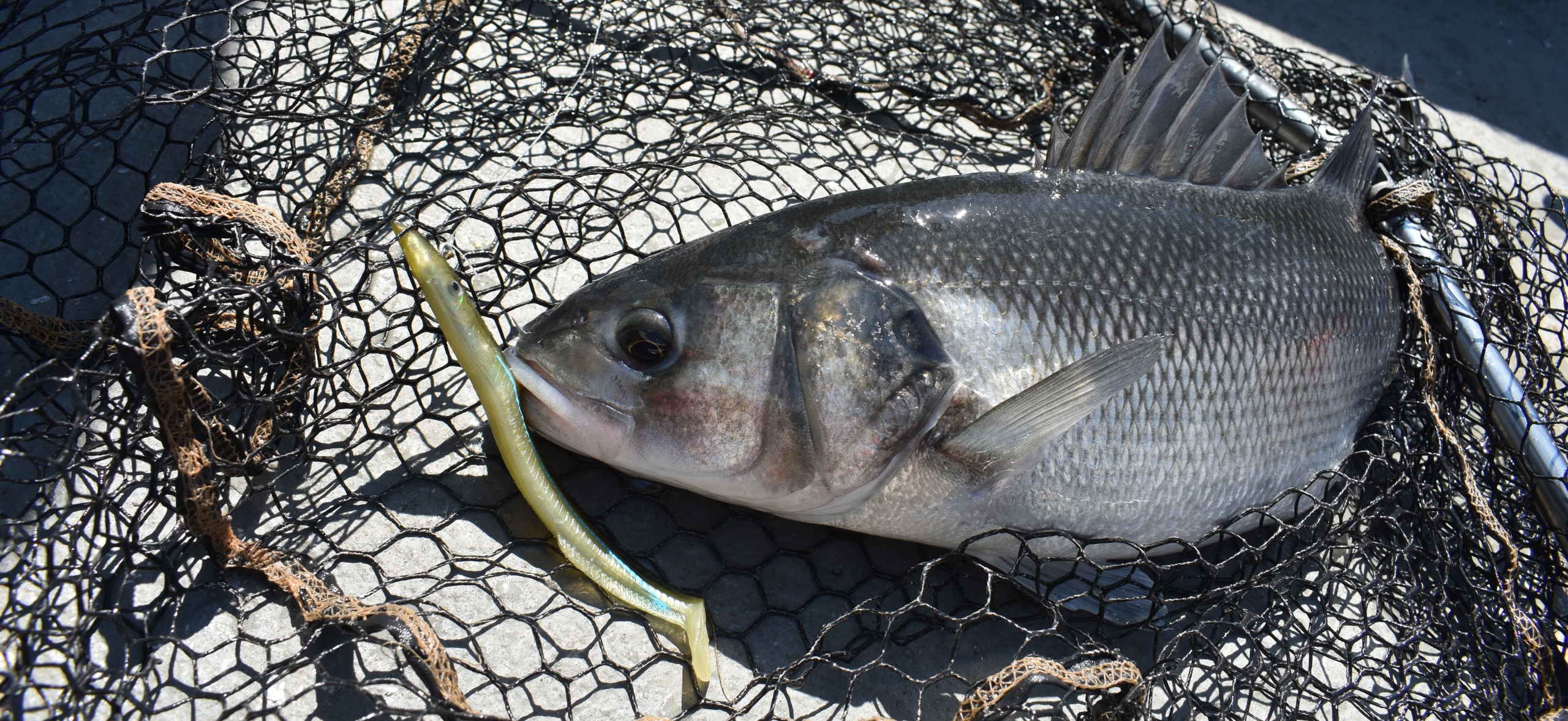Tim Macpherson explains a few of the basics for mastering this common boat fishing technique.
There are, of course, just two basic ways we fish from boats; anchoring and drifting. In this article we are looking at some of the basics of drifting. For many boat anglers fishing on a moving boat is the preferred starting point, particularly when trying out new ground and, in general, we can break it down into two techniques: Dragging a bait along the seabed, for bottom-feeding fish such as turbot and working a bait or lure off the bottom or around a feature, fishing for pollack or bass.

How much weight?
The thing to understand is tide strength has very little, or nothing, to do with weight choice. Sounds unlikely but this is because (without other influences) whatever the speed of the tide, your boat is moving at the same speed. So, your line should go straight down whatever size of weight you use. Of course, sometimes our lines do stream away from the boat, even though they are well up above the seabed but this is because of other factors, which will be explained later.
All things being equal, while drifting, your boat is moving along at the same speed as the column of water beneath you and your bait is going straight down. Because of this, there are three factors affecting the choice of weight.
- Speed of descent: How quickly do you need your bait to descend? The heavier or more streamlined the weight, the faster it will go down.
- Your tackle and line: Different tackle combinations have different sensitivities and so a heavier weight may be needed in order to allow you to feel the tackle hitting the seabed, so that you know when to begin your retrieve.
- The depth of water: The deeper you are fishing the more difficult it is to feel your gear hitting the seabed so you may want to increase your weight size. In reality this is only relevant when the seabed is more than 80m and, again, depends on the sensitivity of your gear.
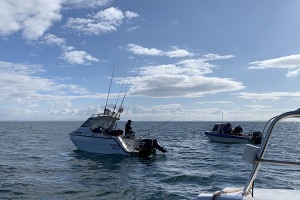
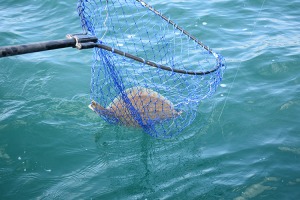
Line streaming
So, the influence of the tide on your tackle should be negligible because you are moving with the column of water that you are fishing in. So, what is it that, in practice, will make lines stream away from the boat? There are two influencing factors.
Differential tide movement:
The speed of tide at the surface is greater than the speed of tide near the seabed. On small tides, the difference is negligible and without other influences, your weight will still go straight down. As the current increases however, the differential in speed increases and your tackle will be influenced by the slower current near the seabed. This means as your lead descends the drag will increase in relation to the boat and this will cause your lines to run away from the boat.
So, to continue to keep in touch with the seabed, which is necessary for cod fishing, you need to let a little more line out each time you drop back. For those familiar with bouncing a lure for cod, you will recall that on the bigger tides the lines are soon running away from the boat at angles greater than 45°. This will affect catch rates so, the obvious thing to do, is increase weights. Initially, this will work and you’ll feel the bump along the seabed however, it won’t stop the lines running away from the boat.
Line bow:
What happens is the greater cross-section of a larger weight increases drag and adds to the problem because the line runs out in a bow. When you lift your rod, most of that effort just tightens up the bow and moves your lure very little. You’ll probably end up running line away from the boat at a shallow angle and are more likely to snag the seabed even though you think you are lifting your lure well clear of the it with each lift of the rod when, actually, it is hardly moving.
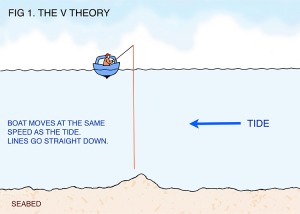
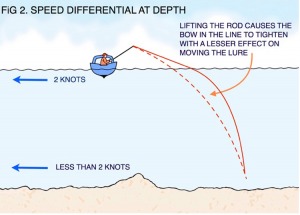
Differential tide movement:
The speed of tide at the surface is greater than the speed of tide near the seabed. On small tides, the difference is negligible and without other influences, your weight will still go straight down. As the current increases however, the differential in speed increases and your tackle will be influenced by the slower current near the seabed. This means as your lead descends the drag will increase in relation to the boat and this will cause your lines to run away from the boat.
So, to continue to keep in touch with the seabed, which is necessary for cod fishing, you need to let a little more line out each time you drop back. For those familiar with bouncing a lure for cod, you will recall that on the bigger tides the lines are soon running away from the boat at angles greater than 45°. This will affect catch rates so, the obvious thing to do, is increase weights. Initially, this will work and you’ll feel the bump along the seabed however, it won’t stop the lines running away from the boat.
Line bow:
What happens is the greater cross-section of a larger weight increases drag and adds to the problem because the line runs out in a bow. When you lift your rod, most of that effort just tightens up the bow and moves your lure very little. You’ll probably end up running line away from the boat at a shallow angle and are more likely to snag the seabed even though you think you are lifting your lure well clear of the it with each lift of the rod when, actually, it is hardly moving.
Change technique
In a strong tide the answer is to change your technique, not your weight. Once your line approaches an angle close to 40°, either retrieve completely and start again, or change from bouncing to the drop and retrieve twenty turns.
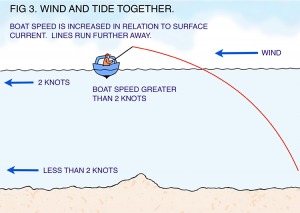
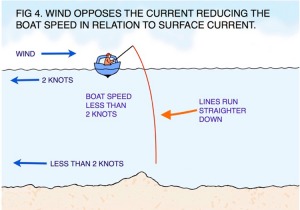
Wind
Any wind will affect your boat and, depending on its direction, will either slow the boat or increase its speed in relation to the speed of the tide at the surface. Since what you lower into the water will be influenced by the speed of the water around it, your tackle will travel at a different speed to your boat and so will again pay out away from the boat. There is nothing you can do about this. Increasing weight size will not solve the problem, but may add to it.
Wind and tide
If the wind and tide are in the same direction then problems are doubled. If you have a wind against tide situation, then they might just cancel each other out. For instance, if the wind slows the speed of the boat to somewhere near the speed of the tide at the seabed, then lines will appear to go straight down and normal codding techniques will be productive.
The right timing
In practice, some boat skippers will, on big tide days when the wind is blowing, alter the timings of the fishing to fish the six hours of tide that opposes the wind. As for weight choice, assuming a mid-channel average depth of around 60m, an 8oz weight will suffice. When conditions make the fishing on the drift challenging, change technique, not weight. The choice of weight shape should always be a long bomb because they have a small cross-section from above and below resulting in a fast descent and a low drag retrieve.
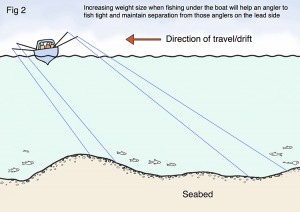
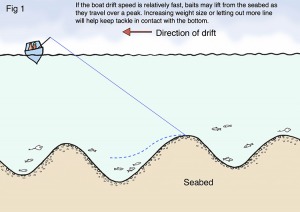
Drifting with baits
In general, the most effective way to catch most flatfish, gurnards and other species is to drag and bait along the bottom. You can cover far more ground and because plaice, in particular, respond to a moving bait it proves far more effective
In terms of boat fishing skills, drifting with a bait along the seabed should be one of the easiest types of fishing we do. Providing you put your end tackle and bait on the seabed and prevent line paying out from your reel, all that can possibly happen as the boat moves in the tide, is that you drag your bait along. However, wide tide and other factors will come into play and it’s crucial that we compensate for this accordingly. Plaice seem to prefer a (surface) drift speed of a round 1 knot but it does vary.
Increasing your chances
Once on the seabed, your tackle will want to stay where it fell. The only thing that will move it, apart from severe weather and currents, is you as you are carried down tide in your boat. But there are factors which affect the size and shape of weight you might choose. These include, depth of water, size of bait, speed of the drift, the nature of the seabed: flat or undulating and what side of the boat are you fishing on.
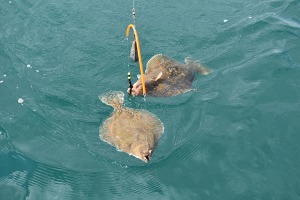
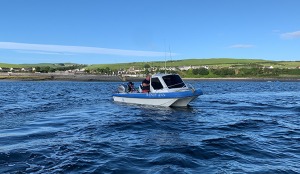
Factors to consider
- Depth
As depth increases, so does an angler’s ability to feel his tackle reaching the seabed. Weight size therefore needs to increase with depth in order to maintain a positive feel.
- Size of bait
Most natural baits, worm or fish strips, tend to have neutral buoyancy. If just placed in the water column, they will sink very slowly so we use weights to take them down faster. The larger the bait the heavier the weight we need to get it to the seabed quickly and to keep it there.
- Speed of drift
If the boat is drifting fast, then you may need to increase weight size to keep your bait on the bottom. Imagine you are fishing from the shore or spinning a lure. As you retrieve your bait or lure, it rises as it comes towards you. It doesn’t stay at the same depth from the start of the retrieve. Dragging a bait along will have the same effect as a gentle retrieve and may lift it from the seabed if your weight is too light.
- The seabed
Once on a flat seabed, with enough weight to hold it down, to compensate for depth and speed of drift etc then there is nothing which will lift it from the seabed. An undulating seabed however, one with peaks and troughs, adds a new condition where the tackle is pulled over a peak, it may not follow the downward contours of the next trough. Instead it may lift and be suspended for a period off the bottom (see figure one). This can be overcome by either increasing weight size, or better, by letting more line out. The latter may not be possible if you’re fishing under the boat.
- Angler’s position in the boat
When you drift with a bait on the bottom, the lines will always run out in the direction from where the boat is travelling from. In an ideal world, an angler would choose to fish on the side of the boat facing the direction of travel. Unfortunately, on a charter boat, there is rarely enough room for all the anglers to be fishing on the lead side. Some anglers will need to fish on the opposite side of the boat where lines will need to pass under the boat as they drag their baits along. Those anglers fishing under the boat are technically the leading anglers in terms of travel, since it is their baits that will cover the ground first. However, it is the other side which are leading because it is those anglers that dictate the success of the drift, they have the freedom to fish as far away from the boat as they like without the risk of running into anglers’ tackle on the opposite side of the boat. Those under the boat are restricted by how much line they can pay out because of the proximity of lines on the lead side. The lead side have a duty to fish away from the boat at a distance to give those anglers fishing under the boat freedom to react to a bite by spooling line. Those anglers fishing under the boat fish with a tight line. Increasing your weight size when fishing under the boat helps in fishing tight and maintaining separation from the lead side anglers
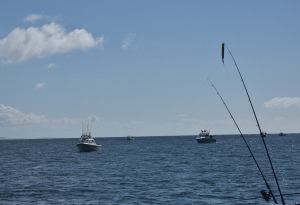
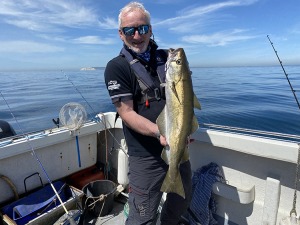
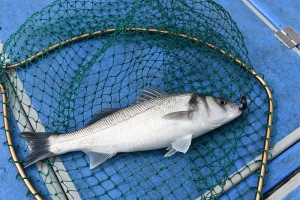
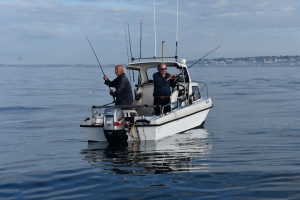
Weight shapes
Weight shapes for dragging a bait along the bottom should ideally be something that doesn’t roll. A round weight or a weight with round edges may roll laterally into your neighbour’s swim and contribute to a possible unnecessary tangle. My personal choice is for a bopedo type lead that has defined edges to prevent roll. Many anglers also favour the watchlead shape. These flat leads wont roll and the knobbly bottom and top are supposed to kick up sand and shingle acting as an attractant for a waiting fish.
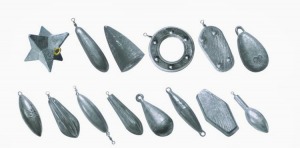
Using cameras
When plaice fishing, I have tried many different leads, torpedo, flat, star-shaped and watch leads. It’s difficult to accurately log relative success, so I used a camera attached to a spreader to see if I could spot any difference in behaviour. The results were clear – watch leads puff up a lot more of the sand and shingle and this, in turn, attracts more fish and their behavior is more decisive as they are clearly stimulated by the activity.
If you enjoyed this article you can buy the issue or subscribe by clicking the links below:
Buy digital copies - £2.99 each Subscribe Now Digital Subscription Click here for 12 Months of digital issues for £19.99
